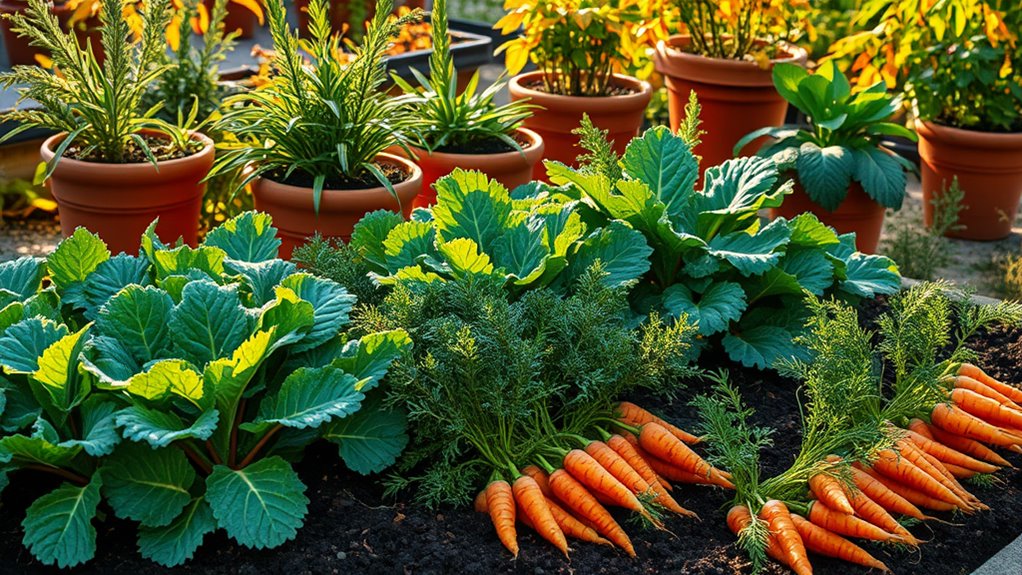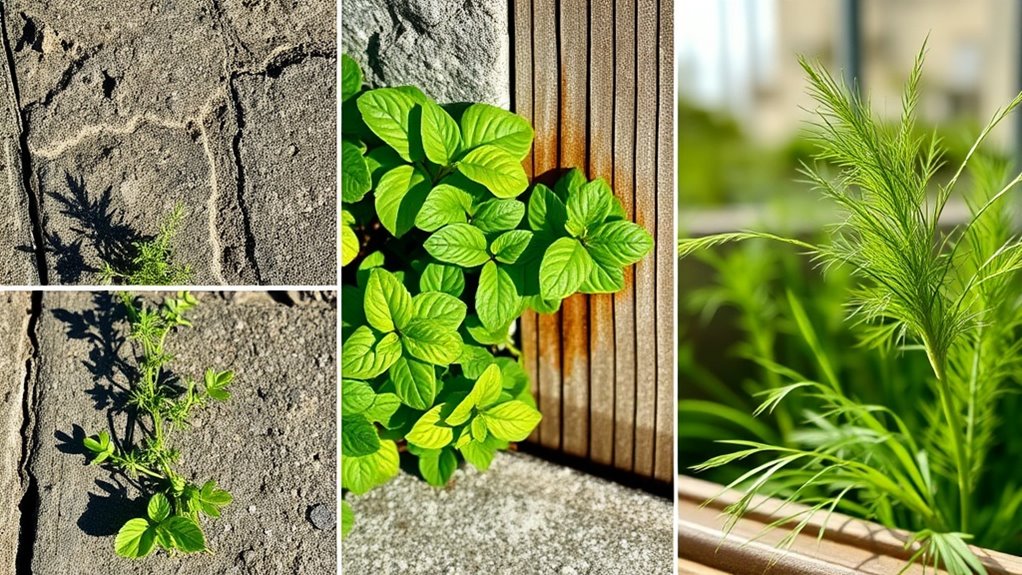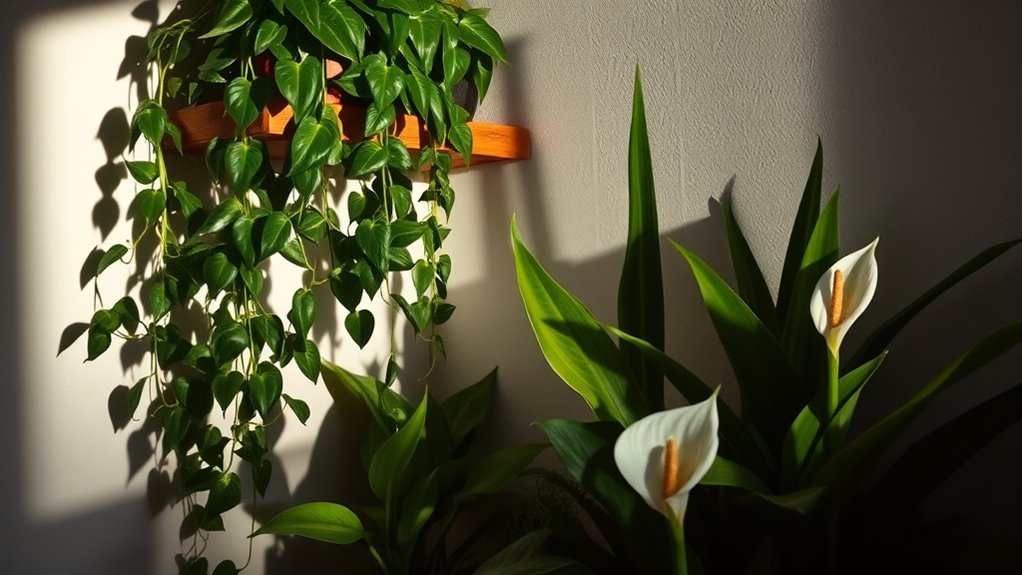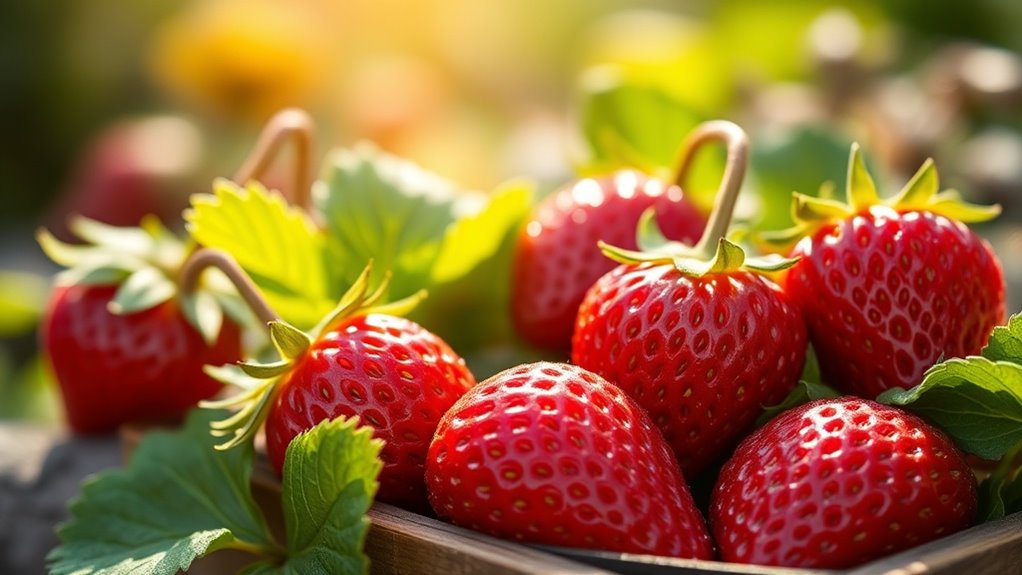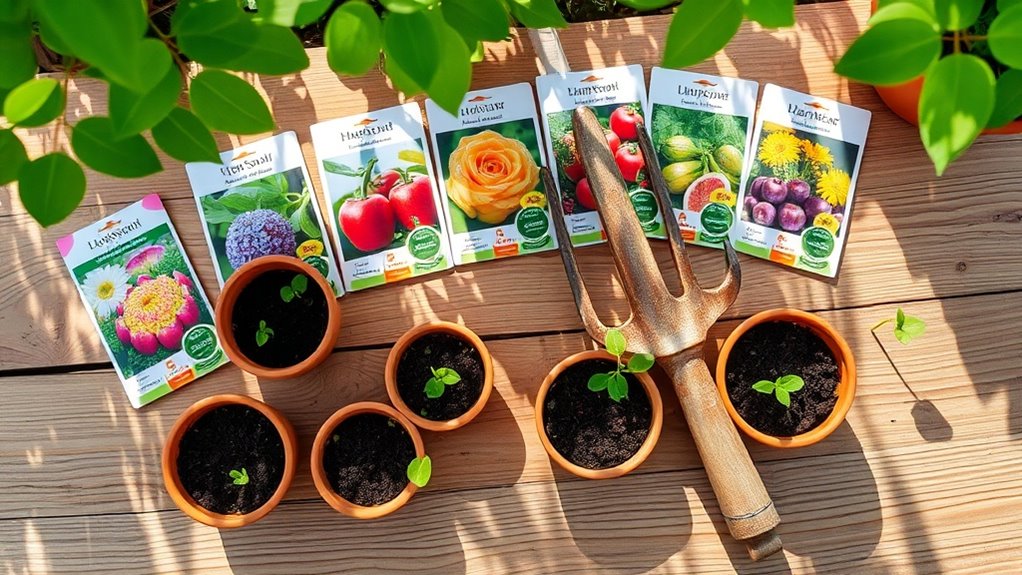What to Plant This Fall to Keep Your Garden Alive Year-Round
As fall approaches, it’s time to consider what you can plant to keep your garden thriving throughout the year. Hardy vegetables like kale and broccoli can withstand cooler temperatures, while resilient herbs such as rosemary add flavor and fragrance to your meals. Perennial plants like asters not only brighten your space but also attract beneficial pollinators. Understanding these options is crucial for ensuring your garden remains productive. So, what steps should you take to prepare your space for winter?
Key Takeaways
- Plant hardy vegetables like kale, broccoli, and Brussels sprouts for winter harvests and sweeter flavors after frost.
- Sow garlic in the fall for a bountiful summer crop, enhancing your garden’s productivity.
- Incorporate perennial plants like asters and sedum for vibrant colors and pollinator attraction year-round.
- Establish hardy herbs such as rosemary and thyme to provide fresh flavors and resilience through winter months.
- Prepare your garden by cleaning debris and mulching to protect plants and improve soil health for ongoing growth.
Benefits of Fall Planting
Have you ever wondered why fall is the perfect time to plant?
During this season, soil temperatures remain warm, promoting root growth before winter sets in. This is crucial for successful fall garden planning.
You’ll also benefit from reduced competition from weeds, as many are dormant.
Additionally, fall planting allows plants to establish themselves, leading to stronger growth in spring.
The cooler temperatures also mean less stress on your plants, reducing the need for constant watering. Moreover, planting in the fall can provide seasonal vegetables that thrive in cooler weather and can be harvested in early spring.
Best Seasonal Vegetables for Fall
As you consider the benefits of planting this fall, it’s important to choose the right vegetables that thrive in cooler temperatures.
Vegetables like kale, broccoli, and Brussels sprouts are excellent choices; they not only endure frost but also become sweeter after exposure.
Carrots and beets can be sown now, providing hearty roots for winter harvests.
Spinach and Swiss chard grow quickly, offering tender greens even in chilly weather.
Don’t forget about garlic, which you can plant in fall for a bountiful summer yield. Additionally, late summer sowing allows you to maximize your garden’s productivity before winter sets in.
Hardy Herbs to Grow in Autumn
Fall isn’t just for vegetables; it’s also a great time to plant hardy herbs that can withstand the cooler weather. Consider adding rosemary, thyme, and sage to your garden. These herbs not only survive frost but also enhance your culinary dishes.
Plant them in well-draining soil, ensuring they receive at least six hours of sunlight daily. Water them moderately, allowing the soil to dry out between watering.
You can even harvest these herbs throughout the winter, making your meals flavorful. With proper care, these resilient herbs will thrive and provide fresh ingredients right when you need them most. Additionally, many of these herbs are known for their hardiness during frost, making them ideal choices for fall planting.
Perennial Plants That Thrive in Fall
Autumn presents an excellent opportunity to introduce a variety of perennial plants to your garden.
Consider adding asters, which bloom late in the season and attract pollinators. Sedum, with its thick, succulent leaves, thrives in cooler temperatures while providing vibrant color. Additionally, consider planting ornamental grasses like Miscanthus, which add texture and movement. Hellebores, or Lenten roses, can also be planted now, offering early spring blooms.
These hardy perennials not only enhance your garden’s aesthetic but also establish strong root systems, ensuring they thrive come spring. Selecting varieties suited to your climate will lead to the best results. Select varieties suited to your climate for the best results.
Tips for Preparing Your Garden for Winter
With the arrival of cooler temperatures, it’s time to focus on preparing your garden for the winter months ahead.
Start by cleaning up any debris, such as dead leaves and spent plants, to prevent pests and diseases. Next, mulch around your perennials to insulate roots and retain moisture. Consider wrapping vulnerable shrubs with burlap to shield them from harsh winds. If you’ve got tender plants, either bring them indoors or provide adequate protection. Finally, test your soil pH and amend as needed, ensuring your garden is ready to thrive come spring. Remember that acidic soil can hinder plant growth, so adjusting the pH is crucial for a healthy garden.
These steps will help safeguard your garden through winter.
Companion Planting for Fall Gardens
Companion planting can significantly enhance your fall garden’s productivity and health.
By pairing certain plants, you can maximize space, improve nutrient uptake, and deter pests.
Here are four effective combinations to consider:
-
Carrots and Onions: The strong smell of onions repels carrot flies.
-
Spinach and Strawberries: Spinach provides ground cover, keeping strawberries cooler and moist.
-
Garlic and Roses: Garlic deters aphids and enhances rose health.
-
Cabbage and Dill: Dill attracts beneficial insects that protect cabbage from pests.
Additionally, companion planting can also improve the flavor and yield of your crops, making it a valuable strategy for any garden.
Embrace these partnerships to cultivate a thriving fall garden that continues to flourish year-round!
Maintaining Your Fall Garden for Year-Round Growth
To ensure your fall garden thrives year-round, you’ll need to implement effective seasonal planting strategies and soil preparation techniques. Properly preparing your soil now can enhance nutrient availability and support plant resilience. Additionally, applying winter protection methods will safeguard your plants against harsh conditions, setting them up for a successful growing season ahead. Incorporating seasonal gardening hacks can further optimize your garden’s productivity and health throughout the year.
Seasonal Planting Strategies
How can you ensure your fall garden thrives throughout the year?
Implement these seasonal planting strategies for sustained growth:
- Choose Hardy Varieties: Opt for cold-tolerant plants like kale and carrots that withstand frost.
- Utilize Row Covers: Protect your plants from harsh weather while allowing sunlight in.
- Practice Succession Planting: Stagger planting times for a continuous harvest, ensuring fresh produce throughout the seasons.
- Rotate Crops: Change plant locations each year to prevent soil depletion and pests.
Soil Preparation Techniques
Building on those seasonal planting strategies, effective soil preparation is vital for maintaining a thriving fall garden year-round.
Start by testing your soil’s pH and nutrient levels; this helps you understand what amendments are needed.
Incorporate organic matter, like compost or well-rotted manure, to improve soil structure and fertility.
Tilling the soil lightly enhances aeration, but avoid overworking it to prevent compaction.
Mulching around plants helps retain moisture and suppress weeds.
Finally, consider planting cover crops during the off-season to enrich the soil further.
With these techniques, you’ll ensure your garden remains productive and healthy throughout the year.
Winter Protection Methods
What strategies can you employ to protect your fall garden during the harsh winter months?
Implement these effective winter protection methods:
-
Mulching: Apply a thick layer of organic mulch around your plants to insulate roots and prevent frost damage.
-
Row Covers: Use fabric row covers to shield plants from freezing temperatures while allowing sunlight in.
-
Cold Frames: Construct cold frames to create a mini-greenhouse effect, providing warmth and protection for tender plants.
-
Watering: Ensure your plants are well-watered before winter; moisture helps them withstand colder temperatures.

